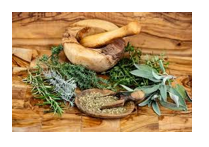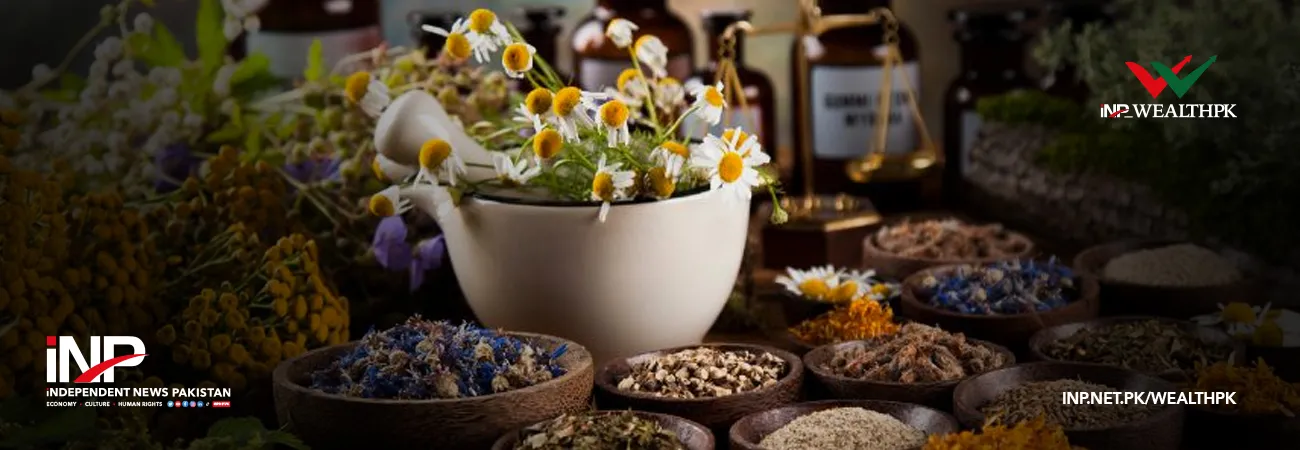INP-WealthPk
Faiza Tehseen
The government has been urged to fully utilize Balochistan's unique medicinal and aromatic herbs, shrubs, and plants to bolster the province's cottage industry.

Dr. Riffat Tahira, a principal scientific officer and program leader of the National Medicinal, Aromatic, and Herbs Programme of the Pakistan Agricultural Research Council (PARC), highlighted the diverse flora in different areas of Balochistan. Speaking to WealthPK, she emphasized that these plants have significant industrial, medicinal, and domestic benefits. "Promoting value-added products from these plants can generate substantial side income and help conserve vegetation, particularly those nearing extinction. This will encourage people to care for these plants instead of merely using them as livestock feed," she explained. Globally, she noted, the demand for value-added herbal, medicinal, and aromatic plants is high. Dr. Tahira pointed out that the various types of flora in Balochistan serve multiple industrial purposes. "For instance, Ficus johannis, locally called Anjir, is used in medicine and dairy, particularly in cheese production.
Juniperus excelsa ssp polycarpos, or Greek juniper (locally known as Apurs), has its oil, powder, extract, and berries used in food, beverages, soaps, and cosmetics for flavor and fragrance. Pistacia Khinjuk (LC Kasur) and Pistacia atlantica (LC Shanay) provide essential oils and resins beneficial for respiratory and gastrointestinal health. Additionally, Pistacia atlantica leaves are used in durable textile dyeing. Fraxinus, locally known as Shishar, contains medicinal agents used in broad-spectrum antibiotics and anti-aging products." Highlighting the importance of certain shrubs, Dr. Tahira added, "Lonicera hypoleuca (LC Adang) is an ornamental plant and cover crop that improves soil health, reduces erosion, enhances water availability, increases biodiversity, and controls pests and farm diseases.
Its leaves are also palatable for livestock. Salvia cabulica (LC Mateto) is used in perfumery and as a food sweetener. Cotoneaster afghanica (LC Sehchob) provides nectar for pollinating insects. The strong, fine-grained wood of Cerasus rechingeri (LC Chank), or wild cherry, is used in crafting cabinets and musical instruments, while its bark extracts are used to treat cancer and gastrointestinal disorders. The roots, flowers, and resins of Convolvulus spinous (LC Delako) treat wounds, fever, and cancer. Other plants like Daphne mucronate (LC Phiphal), Amygdalus brahuica (LC Mazhmunk), Caragana ambigua (LC Makhi), and Spirea brahuica (LC Gringosehchob) are effective in treating skin ulcers, carbuncles, and abscesses, with the latter also possessing anti-inflammatory and pain-relieving properties." Dr. Tahira underscored that many other beneficial grasses and herbs with medicinal and industrial uses exist in Balochistan.
She stated, "Products made from these plants can bring significant economic benefits to local communities." She urged the government to initiate training sessions to raise awareness about these natural resources. "Government officials should provide proper training for value addition and marketing. This will help alleviate poverty and create new opportunities for the locals," she said. Muhammad Niaz Khan Kakar, Conservator of Forests Quetta and Project Director – UPGG Wildlife and REDD+ Expert, echoed the call for utilizing Balochistan's valuable vegetation for socioeconomic upliftment and emphasized the need for mass awareness about their importance. Niaz pointed out that conserving plant species nearing extinction could be significantly improved by raising awareness and making use of these resources.
Credit: INP-WealthPk













